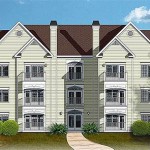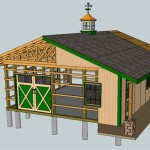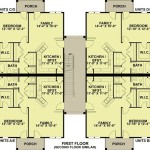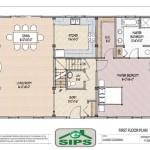Passive Solar House Plans For Cold Climates
Passive solar house plans are designed to take advantage of the sun's energy to heat and cool the home. This can be a great way to save money on energy bills and reduce your carbon footprint. However, it is important to note that passive solar house plans are not suitable for all climates. In cold climates, where the sun's rays are less intense, it can be difficult to design a passive solar house that can meet all of the heating needs of the home.
There are a number of different factors that need to be considered when designing a passive solar house for a cold climate. These factors include the following:
- The orientation of the house
- The size and type of windows
- The amount of insulation
- The thermal mass of the house
- The use of sunspaces and solar panels
Passive solar house plans can be a great way to save money on energy bills and reduce your carbon footprint. However, it is important to work with an experienced designer to ensure that your home is designed to meet the specific needs of your climate.
The Orientation of the House
The orientation of the house is one of the most important factors to consider when designing a passive solar house. The house should be oriented so that the windows face south, which is the direction from which the sun's rays come in the Northern Hemisphere. This will allow the maximum amount of sunlight to enter the home during the winter months.
The Size and Type of Windows
The size and type of windows are also important factors to consider. Large windows will allow more sunlight to enter the home, but they can also lead to heat loss during the winter months. Small windows will reduce heat loss, but they will also reduce the amount of sunlight that enters the home.
The Amount of Insulation
Insulation is another important factor to consider when designing a passive solar house. Insulation will help to keep the heat inside the home during the winter months and the cool air inside the home during the summer months.
The Thermal Mass of the House
The thermal mass of the house is the ability of the house to store heat. This can be achieved by using materials such as concrete, brick, and tile. Thermal mass can help to keep the home warm during the winter months and cool during the summer months.
The Use of Sunspaces and Solar Panels
Sunspaces and solar panels can also be used to supplement the heating and cooling of a passive solar house. Sunspaces are enclosed spaces that are heated by the sun's rays. Solar panels convert the sun's rays into electricity, which can be used to heat the home.
Passive solar house plans can be a great way to save money on energy bills and reduce your carbon footprint. However, it is important to work with an experienced designer to ensure that your home is designed to meet the specific needs of your climate.

Passive Design Strategies For Cold Climate

Passive Design Strategies For Cold Climate

The Next Generation Of Passive Solar For Cold Climates Construction

Passive Solar House Design Ecoliv

Passive Solar House Design Homes Kept Warm By The Sun Ecohome

Passive Solar House Design

Diy Passive Solar House Plans To Design Details Ecohome Green Building Guide Part 1

A Simple Design Methodology For Passive Solar Houses
Passive Solar Energy Efficient Home The House On Hill Coveney Browne Architects

Passive Heating Yourhome








